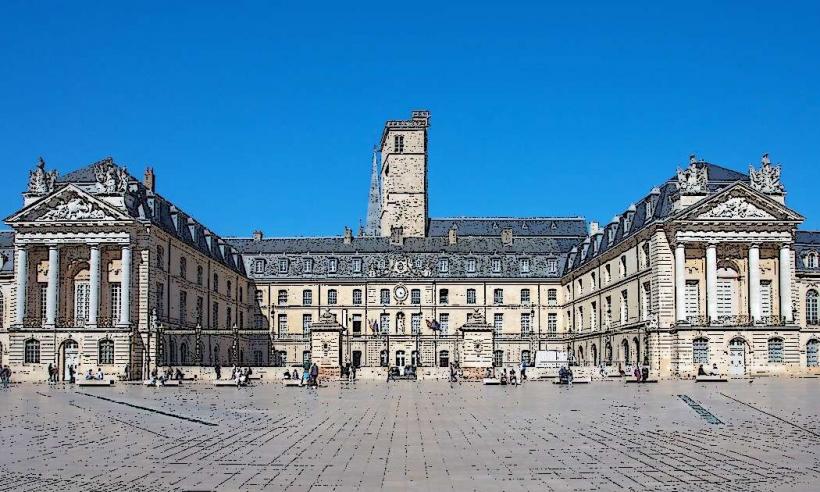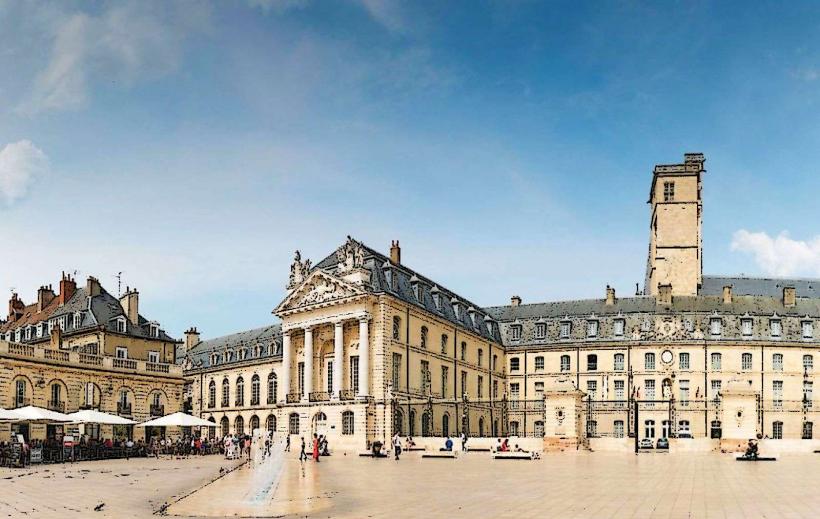Information
Landmark: Dijon CathedralCity: Dijon
Country: France
Continent: Europe
Dijon Cathedral, officially known as Cathédrale Saint-Bénigne de Dijon, is a prominent historical and architectural landmark located in the heart of Dijon, France. This Gothic cathedral is dedicated to Saint Benignus, the first bishop of Dijon, and serves as an important religious site and a key part of the city's heritage.
Key Features of Dijon Cathedral (Cathédrale Saint-Bénigne de Dijon):
1. Historical Significance
- Cathédrale Saint-Bénigne was originally built on the site of an earlier Benedictine monastery founded by Saint Benignus in the 5th century. The cathedral's construction began in the 13th century, with the building being completed in the 15th century.
- The cathedral was designated as the seat of the Bishop of Dijon, and its location has made it an important spiritual center throughout the city's history.
2. Architectural Style
- The cathedral is primarily built in the Gothic architectural style, with some Romanesque elements, particularly in the crypt. It showcases the typical Gothic features such as pointed arches, ribbed vaults, and flying buttresses.
- The façade of the cathedral is characterized by elaborate sculptures, including scenes from the Last Judgment and other religious iconography. The rose window on the western façade is a notable feature, displaying beautiful stained glass.
- The towers of the cathedral are asymmetrical, with one being much taller than the other. The higher tower, known as the Tour Saint-Bénigne, was intended to be the centerpiece of the cathedral but was never completed.
3. Interior
- Inside the cathedral, visitors can admire the impressive vaulted ceilings, the stained-glass windows, and the furnishings that reflect the cathedral's long history.
- The crypt of Saint-Bénigne is one of the most significant parts of the cathedral. It houses the remains of Saint Benignus, and it is one of the oldest parts of the building. The crypt is known for its Romanesque architecture, which contrasts with the Gothic style above.
- The choir area and nave are notable for their stone columns and the paintings and stained glass that adorn the windows, depicting biblical stories and saints.
4. The Organ
- The cathedral is home to a magnificent pipe organ, a historical instrument dating back to the 17th century. It is still used for religious services and concerts and is an excellent example of French Baroque organ-making.
5. The Tomb of Saint Benignus
- One of the cathedral's key historical features is the tomb of Saint Benignus, located in the crypt. This tomb is a significant site for pilgrims and has been the focus of religious devotion for centuries. Saint Benignus is considered the first bishop of Dijon and a key figure in the Christianization of the region.
6. Role in the Community
- Cathédrale Saint-Bénigne continues to be an active place of worship and is used for regular Catholic Masses. It also hosts special religious ceremonies, such as Christmas and Easter services.
- The cathedral also plays a role in the broader cultural life of Dijon, hosting concerts, choir performances, and organ recitals throughout the year, taking advantage of the cathedral's acoustics and historical setting.
7. Restoration and Preservation
- Over the centuries, the cathedral has undergone several restoration projects to preserve its structure and artwork. In the 19th century, a major restoration was led by Viollet-le-Duc, a renowned French architect who worked on many historic buildings, including the famous restoration of Notre-Dame de Paris.
- Efforts continue to preserve the cathedral, including the upkeep of its stained-glass windows, woodwork, and sculptural details.
8. Tourism and Visitor Experience
- Dijon Cathedral is a major tourist attraction in Dijon, drawing visitors for both its religious and architectural significance.
- Visitors can explore the cathedral at their own pace, taking in the grandeur of the Gothic architecture, the intricate stained glass, and the peaceful atmosphere of the interior.
- The cathedral is also part of the Owl's Trail (Le Parcours de la Chouette), a walking tour of the city’s major historical sites, which leads visitors to the cathedral among other landmarks.
9. Location
- The cathedral is situated in the heart of Dijon, near the city's Place de la Libération, which is a central square in the city. Its central location makes it easily accessible for visitors exploring the historic center of Dijon.
Conclusion
Cathédrale Saint-Bénigne de Dijon is an architectural and historical treasure of the city, combining both Gothic grandeur and Romanesque roots. Its history as the seat of the bishopric, the tomb of Saint Benignus, and its beautiful interior and organ make it an important site for both religious worship and cultural tourism. Whether you are interested in architecture, religious history, or simply looking for a peaceful place to visit in Dijon, this cathedral offers a rich and fascinating experience.



